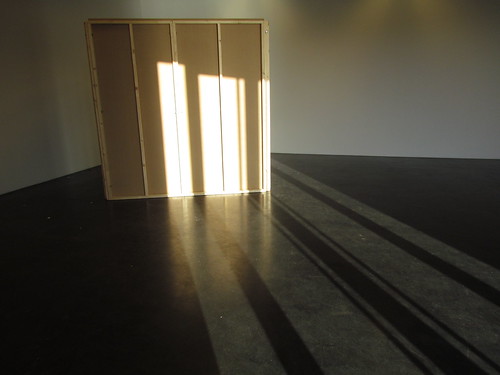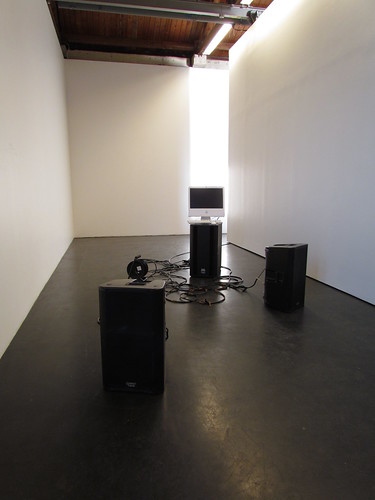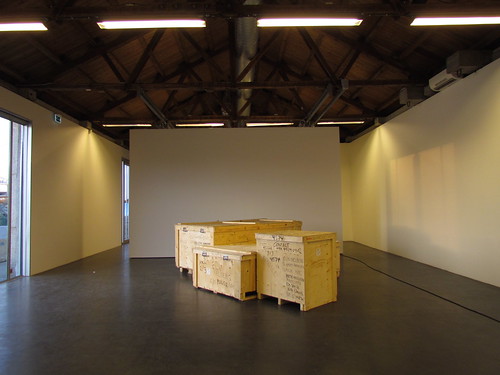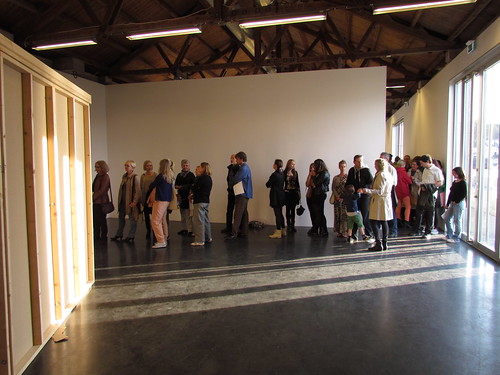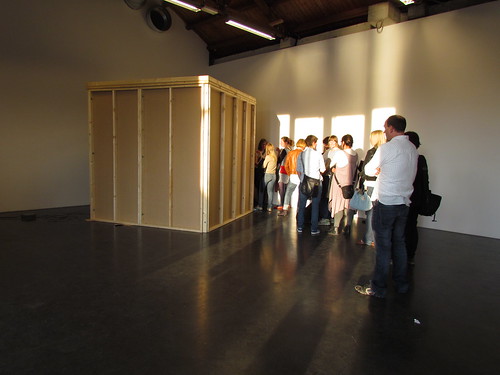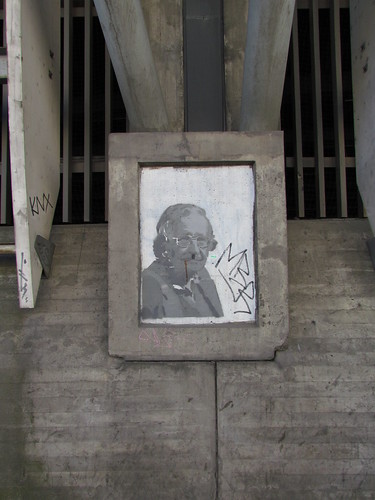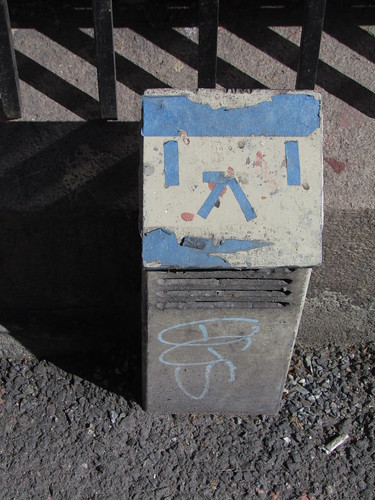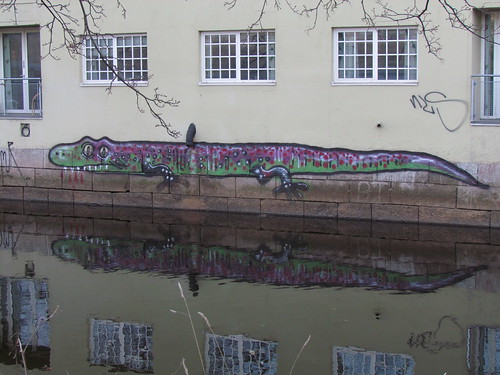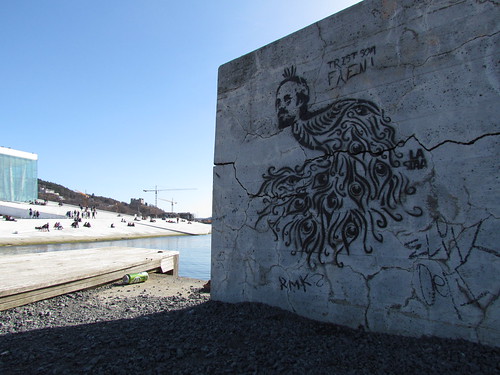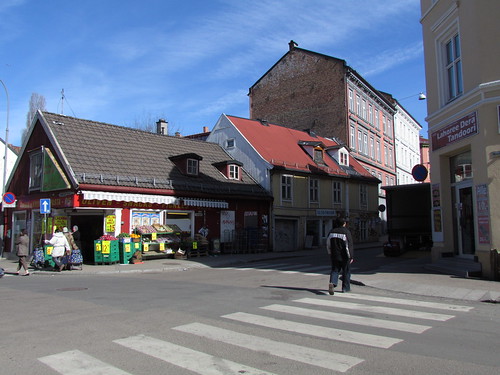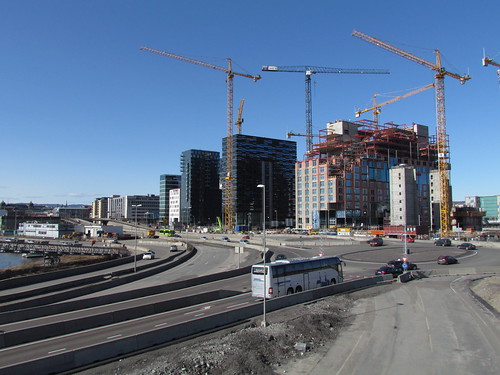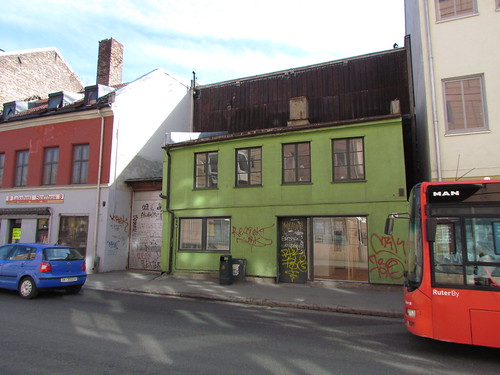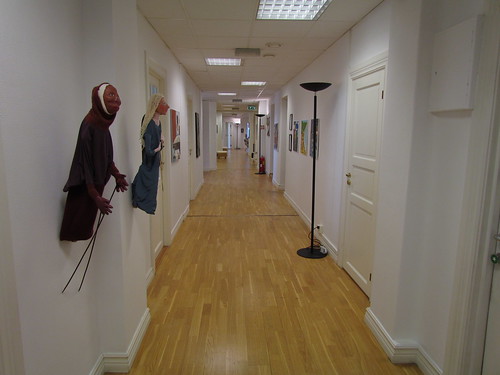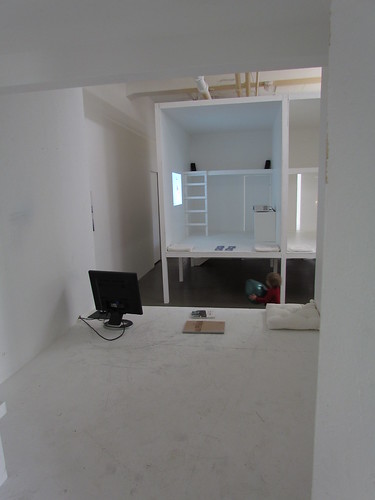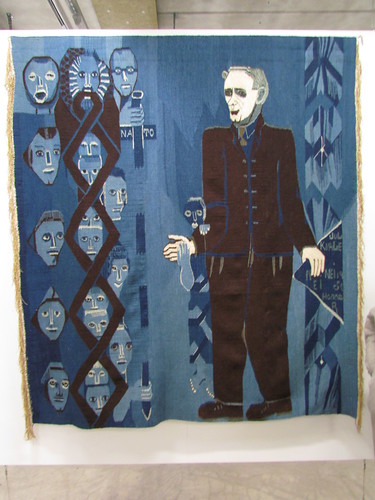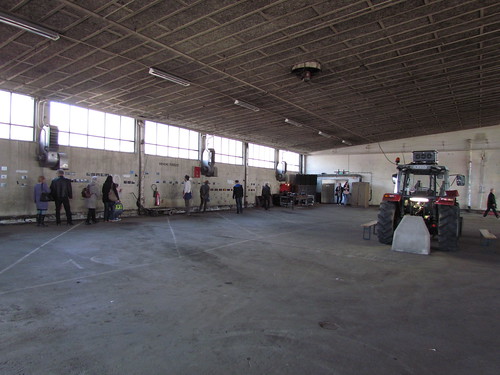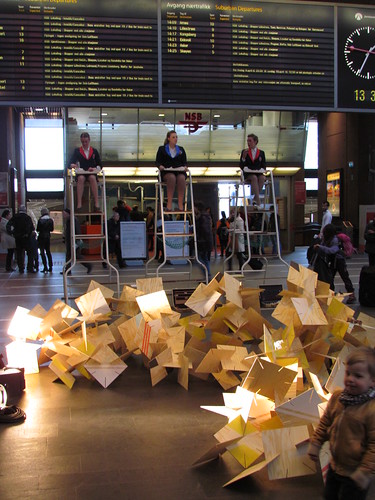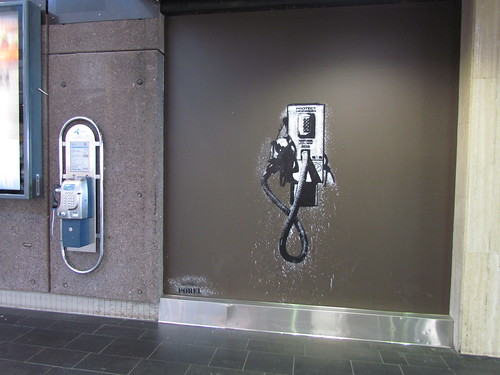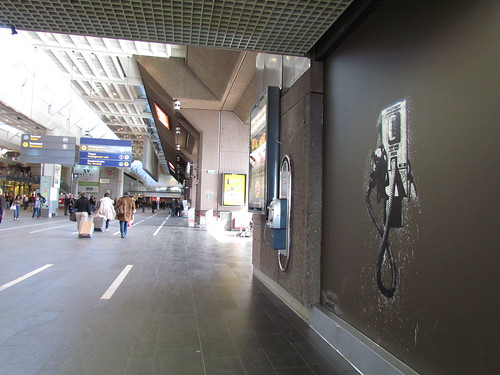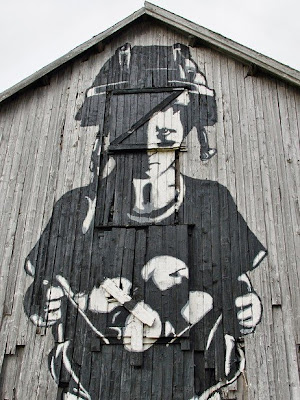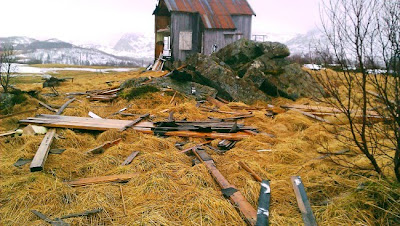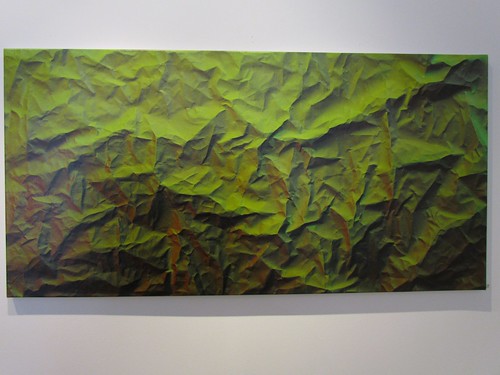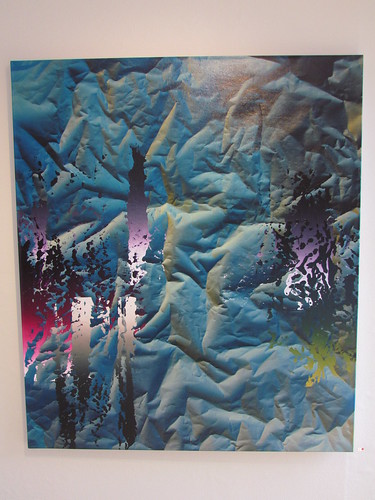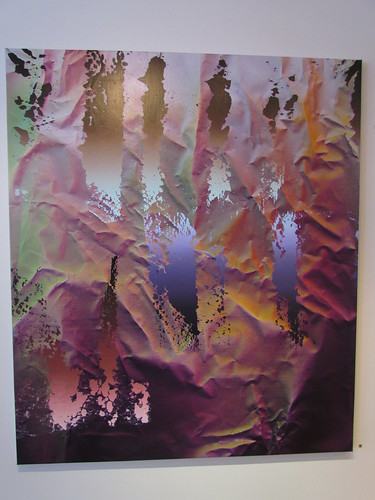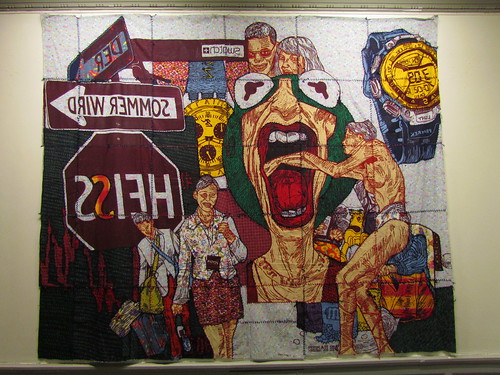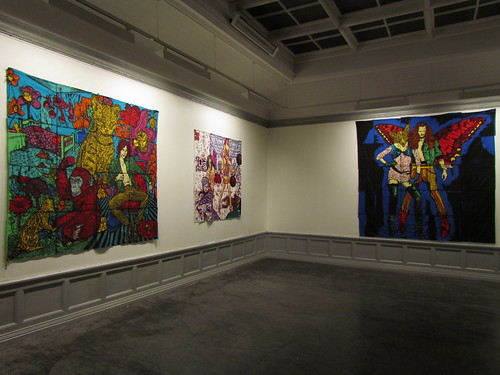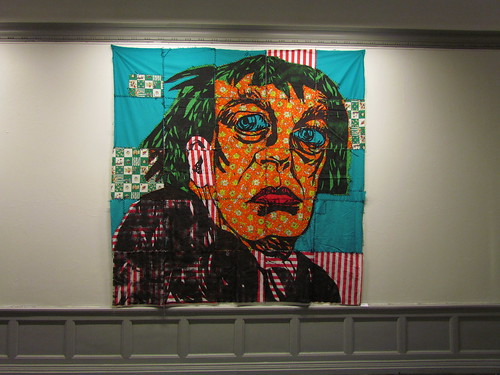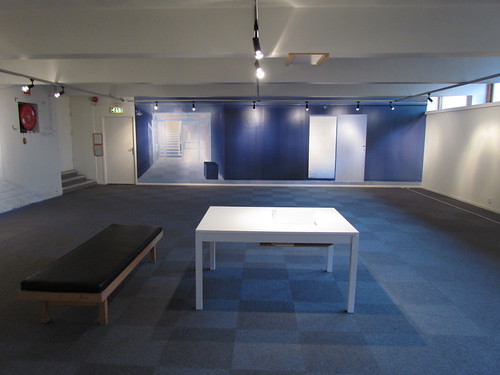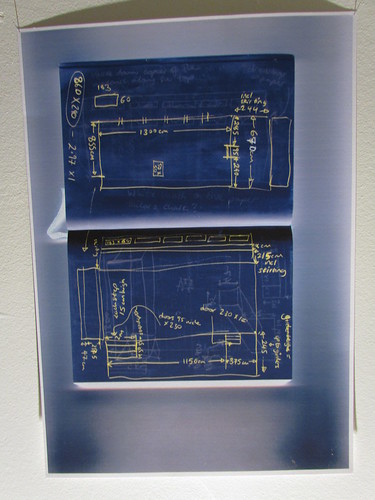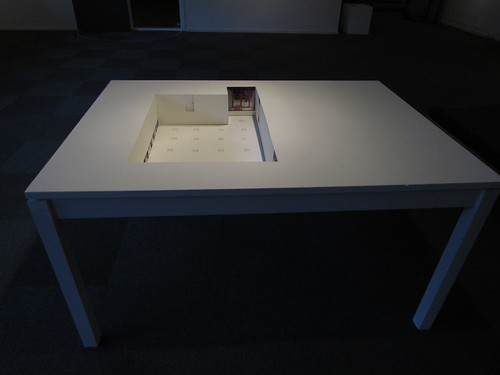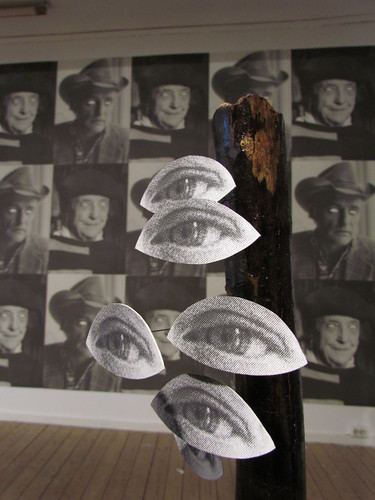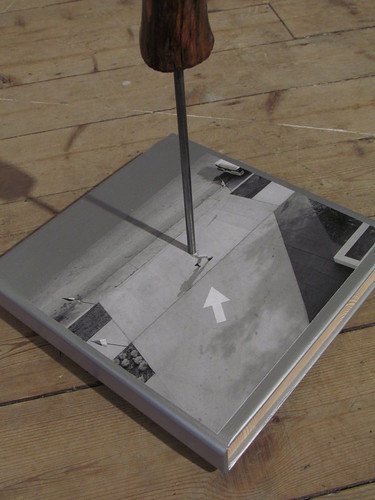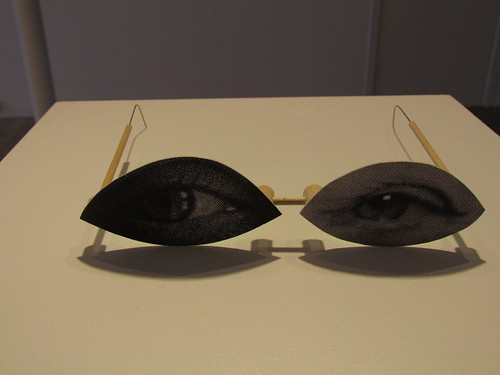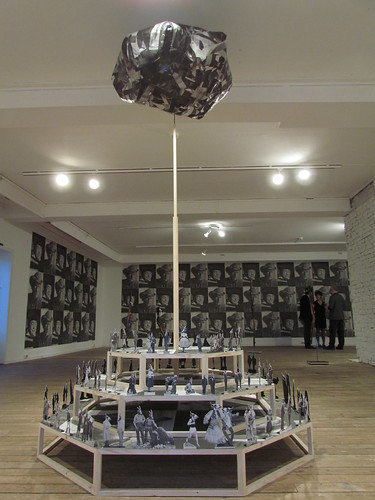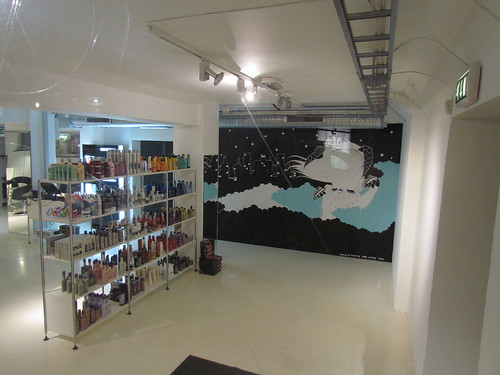Tuesday 5.4.11 the artwork chosen for the new concert hall in Stavanger was presented. The concert hall is a high prestige project for Stavanger as a cultural town, thus the choice of its artwork is very important. The building is placed on a marvellous site directly on the seafront, where all ships entering the heart of Stavanger are passing. The concert hall will open for concerts and visitors in 2012.
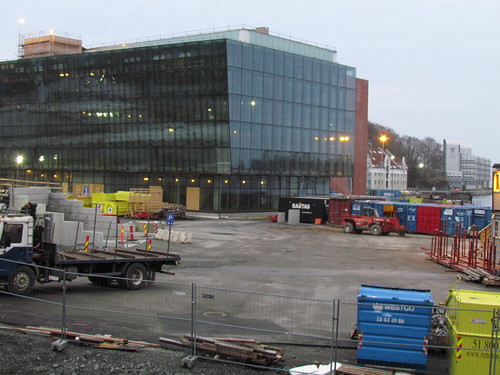
The building site
The choice of concerts and their frequency will of course be of major importance of attracting visitors. But the architecture, the layout of the park and public space outside, and the artwork in the semi-public space inside will be crucial of attracting other visitors. Will this building and area be only for the concert-goers, or will it be a new, attractive meeting point for everybody? Will this be an attractive spot for those not interested in the music, for those who cannot afford a concert ticket, and outside the concert times?
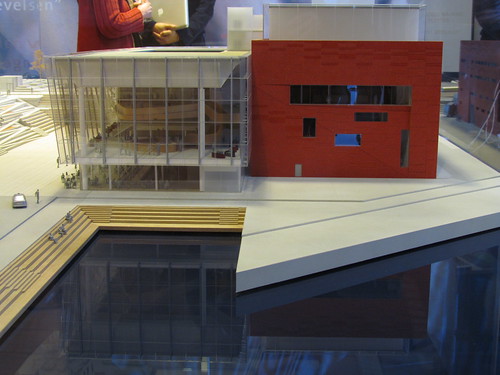
Concert hall model
The four art projects were presented by the artists in the concert hall visitor centre, the future centre of dance. The projects were "Skylight 2" by Jeffrey Inaba - installation in the lobby, "Lekkasje" ("Leak") by Anne Marthe Dyvi - sound art in the parking basement, "Mattor" ("Carpets") by Åsa Marie Bengtsson - art in the outside entrance area, and "Servert" ("Served") by Marianne Pfeffer Gjengedal - an art piece in the center of Stavanger.
SKYLIGHT 2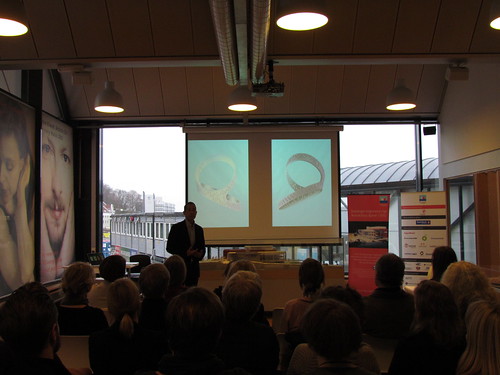
A large sculpture shaped like two joined rings joined will be hanging in the lobby. The sculpture will reflect the changing sunlight, and be lit by led lamps after sunset. It will reflect and react to the time of the day, the activity in the building and the sunlight outside.
I will be curious to see how the sculpture works, it will be an important aesthetic part of the lobby. And it will probably bring joy to those visiting the concerts. But will it have the power to attract visitors to the building itself, like a magic ring from the Tolkien world, as the artist suggested? That remains to see. And will the reaction to the light work?
LEKKASJE
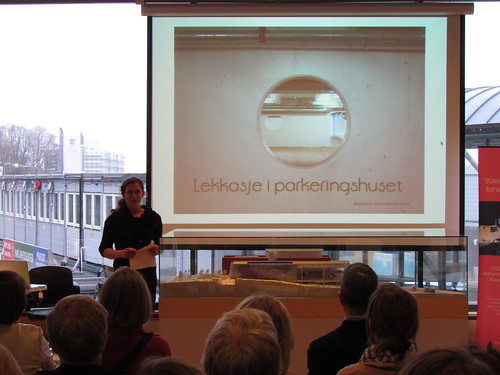
At first when i heard that the title of the sound art in the underground (and under sea level) parking basement would be "leak", I imagined sounds of dripping or flowing water. That could possibly scare visitors away, afraid of a leak causing a flood in the basement. But I was wrong. Instead the leaks will give an insight to the preparations and daytime activities in the concert hall. Visitors arriving to a concert will be able to hear sounds of rehearsals, tuning of instruments and so on, when they park their cars. The soundtrack will be recorded earlier the same day and deleted the same night.
I think this is a brilliant idea, an ephemeral work, showing how much work is behind a great concert. This is giving a lot of credit to the people that work in the building. But at the same time the respect towards them may make the project difficult. A randomized recording of a working environment could break a lot of rules. I really hope they will find a good solution for this, and I also hope the sound will be played sufficiently long or often in the basement.
MATTOR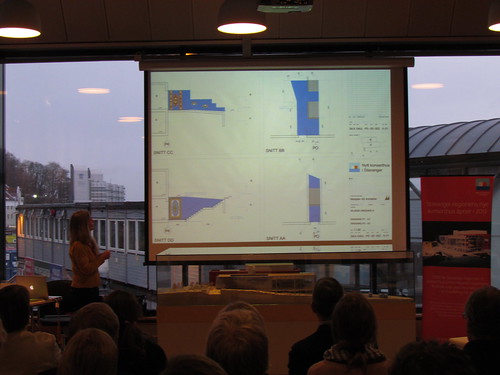
Bengtsson presented ideas of decorating the entrances with colorful mosaics with patterns from exotic patterns. This is a theme she has used in many different settings before. The entrances will become visible and joyful. At the same time the exotic carpets will reflect the vast variety of nationality that inhabit Stavanger.
I hope the exotic patterns will reflect the variety of the visitors to the concert hall. I am positive to anything that bring color to the grey concrete in grey Stavanger weather. And I hope the colors can last through rain, sunshine and ice. But I also hope multi-cultural inhabitants will feel welcomed, and make the concert hall colorful also in its content. Otherwise the carpets will become alien aspects of the building.
SERVERT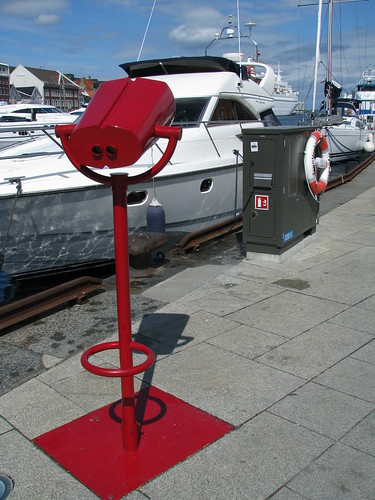
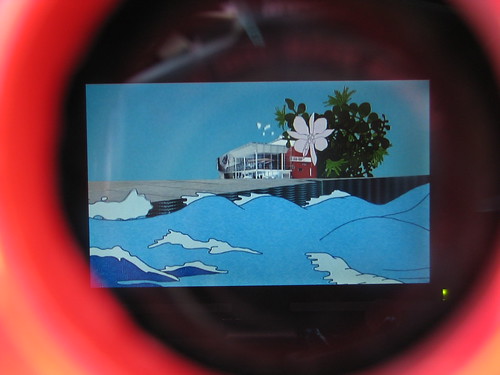
This artwork is already at its place in central Stavanger, on the other side of the bay. It will be removed when the concert hall opens. It is a large, red binocular pointed towards the concert hall site, linking the center of town to the new cultural center. It is placed on the same blue walk path that starts by the concert hall and ends in the east part of town. Looking into it you do not see an enlarged view of the building site, but an animation about the concert hall. The animation show how the building is gradually entangled in plants from the park behind it, and washed by the waves in front of it. More about the project
here.
The installation is like a teaser for the future concert hall, and act as a link between the present center of Stavanger and the future cultural center. But when visitors are allowed to enter the building, the binocular will be removed. I do not quite understand that. Is the thought that the concert hall will be so attractive it does not need any advertisements? I think the sculpture is a great idea, but it would be even better if it stayed.
Another issue is that the sculpture is constantly victim of sabotage. It is placed just in front of the largest consentration of pubs in town, and more or less drunk people have damaged it several times. Even boat-visitors have sabotaged it to steal power for their boats! This is exactly why the sculpture is needed as a permanent sculpture. It would be a permanent reminder to the culture-enemies that the grand concert hall is just across the bay, offering experiences even more satisfying than destruction.
*
CONCLUSION: Will the artwork attract visitors other than concert-goers?
The distance between Stavanger center and the concert hall is about 500m. Will the art be able to attract everybody? I do not think so. Maybe it is not its intention. But it will be enjoyed by the in-house people and concert-goers.
I believe that what is crucial for making this an inviting and attractive site is the layout and functionality of the public area outside the building. If the inside semi-public area in the lobby will have places to sit, public toilets, a kiosk, it could be a nice place to hang around as well. Then you may also enjoy the artwork there.
